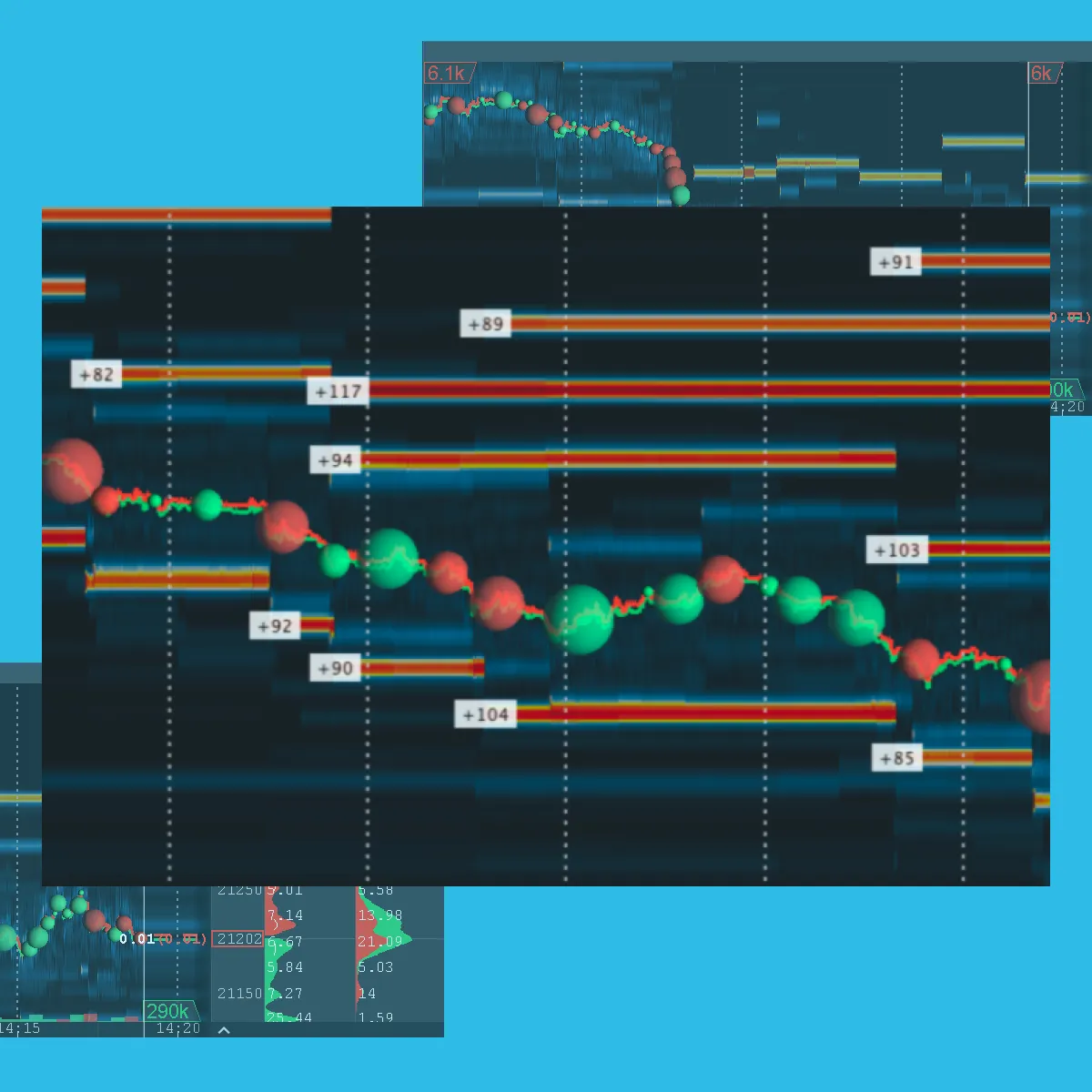

December Trading
Deals Are Live!
Save on Global+, data access,
and add-ons.
See All December Deals

Black Friday
Nov 28-Dec 31
14 days : 8 hours
50% OFF Global+ Quarterly
+ 50% OFF Data (3 months)

Cyber Monday
Dec 1 - Dec 31
14 days : 8 hours
60% OFF Global+ Monthly
+ Data (1 month)

Add-on Deals
Dec 1 - Dec 31
14 days : 8 hours
50% OFF
Add-ons

New Year Sale
Dec 26 - Jan 1
8 days : 8 hours
30% OFF Global+ Lifetime
*Data not included
Education
March 5, 2025
SHARE
Trade Like an Institutional Trader: How to Read the Market Like the Pros
Institutional traders have one major advantage over retail traders: deep liquidity access and order execution strategies that reduce market impact. Unlike retail traders placing small positions, institutional players manage massive order sizes—often thousands of contracts at a time. But trading in large size isn’t as simple as clicking “buy” or “sell.”
The key to trading like an institution is understanding how liquidity interacts with price movement and learning how to position yourself alongside big money instead of against it.
In this guide, we’ll break down how institutions execute trades, how liquidity influences market moves, and how retail traders can use Bookmap to gain similar insights.
📌 What You’ll Learn
- How institutions manage liquidity and order execution
- Why understanding liquidity zones and market absorption is critical
- How retail traders can use Bookmap’s tools to track institutional activity
🔗 Want to see institutional order flow in action? Compare Bookmap Plans Here
How Institutional Traders Think About Liquidity
Liquidity is the foundation of every institutional trade. Unlike retail traders who can buy or sell 100 shares at market without moving price, institutions must be highly strategic about their execution.
Why Liquidity Matters

- Institutions execute thousands of contracts at a time. If they enter a trade at market price, they could push price against themselves before filling their position.
- They need liquidity providers on the other side—if they’re buying, they need a large pool of sellers at a key level.
- If liquidity is weak or unstable, price will move erratically, increasing execution costs.
How Institutions Use Liquidity to Their Advantage
Institutions don’t chase price. Instead, they target liquidity zones where large orders exist, allowing them to enter positions without causing massive price slippage.
Example:
An institutional trader wants to buy 1,000 NASDAQ futures contracts. Instead of buying at market, they wait for liquidity to appear on the heatmap, indicating where sellers are willing to absorb large orders.
The Role of the Order Book & Level 2 Data
Before Bookmap and modern visualization tools, institutional traders had to rely on Level 2 order books to estimate where liquidity was sitting. But raw order book data is limited—many orders are pulled before they ever execute, making it difficult to trust what’s real.
Using Bookmap to Read Institutional Liquidity

With Bookmap’s heatmap, traders can see:
- Where large bids and offers are sitting in real time.
- Whether liquidity is holding or disappearing (spoofing activity).
- How price reacts when it reaches a liquidity level.
Example:
If price approaches a large bid order at $4,000 and that liquidity remains firm, it suggests buyers are absorbing sell pressure. But if that liquidity disappears before price arrives, it could mean a fake wall was created to manipulate price.
How Institutions Execute Trades Without Moving the Market
Institutions use algorithms and execution strategies to prevent large orders from pushing price against them. Here’s how they do it:
A. Iceberg Orders: Hiding Large Trades
- Iceberg orders allow institutions to disguise their true order size by only showing a fraction of it on the book at any given time.
- Retail traders who aren’t using order flow tools won’t see the hidden size behind an iceberg, leading them to misread supply and demand.
📌 How to Spot Icebergs in Bookmap:
- Look for repeated small orders absorbing large amounts of liquidity at a key level.
- Use the Stops & Icebergs tool to identify whether institutions are placing hidden buy or sell orders.
B. Liquidity Absorption: Identifying Strong Support & Resistance
Institutions absorb liquidity at key price levels to build or unload positions without alerting the market.
How This Looks in Bookmap:
- Strong liquidity remains at a level despite multiple price tests → Sign of true institutional demand/supply.
- Price moves toward a level and liquidity disappears before impact → Sign of potential spoofing or fake orders.
Example:
A hedge fund wants to accumulate 1 million shares of a stock but doesn’t want to drive the price up. Instead of buying everything at once, they slowly absorb liquidity at a key support level over multiple hours or days.
Retail traders who only follow price action might not see this happening, but order flow traders can spot aggressive buying with liquidity absorption in Bookmap.
Trading Alongside Institutional Players: Key Strategies

While retail traders can’t move the market like institutions, they can position themselves in ways that align with institutional activity.
A. Trade Off Liquidity Zones, Not Just Price Action
Many retail traders chase breakouts or react to price movements, but institutional traders focus on liquidity levels instead.
📌 How to Adjust Your Approach:
- Identify major liquidity levels before entering a trade.
- Watch how price reacts at those levels—does liquidity get absorbed, or does it disappear?
- Use Bookmap’s Cumulative Volume Delta (CVD) to confirm if buyers or sellers are truly in control.
B. Understand Market Sweeps & Trapped Traders
Institutions will often push price into liquidity zones to trigger stop losses and force retail traders to exit at bad prices.
📌 How to Avoid Getting Trapped:
- If price sweeps through a liquidity level but fails to follow through, it may be a false breakout or reversal signal.
- If price sweeps through and continues with strong momentum, institutions are likely still accumulating.
Example:
A large buy wall appears at $100 on a stock. Price sweeps through it aggressively but fails to continue higher. This signals a possible fakeout, meaning sellers are still in control.
Retail traders who blindly buy breakouts without checking liquidity could end up trapped, while those reading the order flow correctly can fade the move and short at a premium price.
Conclusion: Applying Institutional Trading Techniques to Your Strategy
Institutions don’t trade based on indicators or lagging signals—they trade based on liquidity, market structure, and order flow dynamics. Retail traders who learn to read liquidity, spot absorption, and track iceberg orders can gain a huge advantage over those who rely solely on price action.
How to Apply This to Your Trading
✔ Use Bookmap’s heatmap to find true support & resistance levels based on liquidity.
✔ Watch for iceberg orders and absorption to confirm if a level is being defended.
✔ Track sweeps and false breakouts to avoid getting trapped.
✔ Align your entries with institutional execution strategies for better trade timing.
📌 Want to improve your ability to track institutional activity? Compare Bookmap Plans Here.
